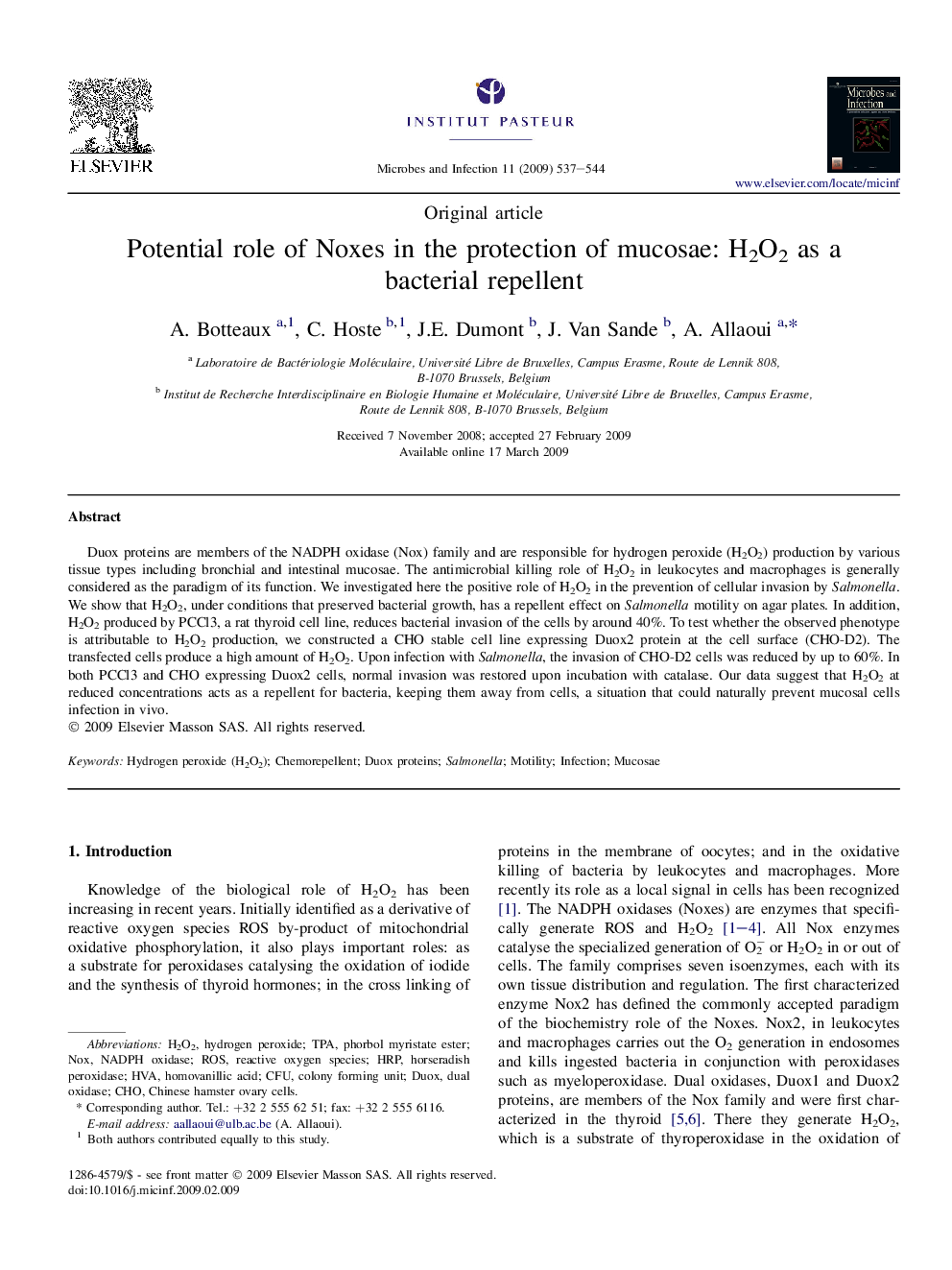| Article ID | Journal | Published Year | Pages | File Type |
|---|---|---|---|---|
| 3415112 | Microbes and Infection | 2009 | 8 Pages |
Duox proteins are members of the NADPH oxidase (Nox) family and are responsible for hydrogen peroxide (H2O2) production by various tissue types including bronchial and intestinal mucosae. The antimicrobial killing role of H2O2 in leukocytes and macrophages is generally considered as the paradigm of its function. We investigated here the positive role of H2O2 in the prevention of cellular invasion by Salmonella. We show that H2O2, under conditions that preserved bacterial growth, has a repellent effect on Salmonella motility on agar plates. In addition, H2O2 produced by PCCl3, a rat thyroid cell line, reduces bacterial invasion of the cells by around 40%. To test whether the observed phenotype is attributable to H2O2 production, we constructed a CHO stable cell line expressing Duox2 protein at the cell surface (CHO-D2). The transfected cells produce a high amount of H2O2. Upon infection with Salmonella, the invasion of CHO-D2 cells was reduced by up to 60%. In both PCCl3 and CHO expressing Duox2 cells, normal invasion was restored upon incubation with catalase. Our data suggest that H2O2 at reduced concentrations acts as a repellent for bacteria, keeping them away from cells, a situation that could naturally prevent mucosal cells infection in vivo.
